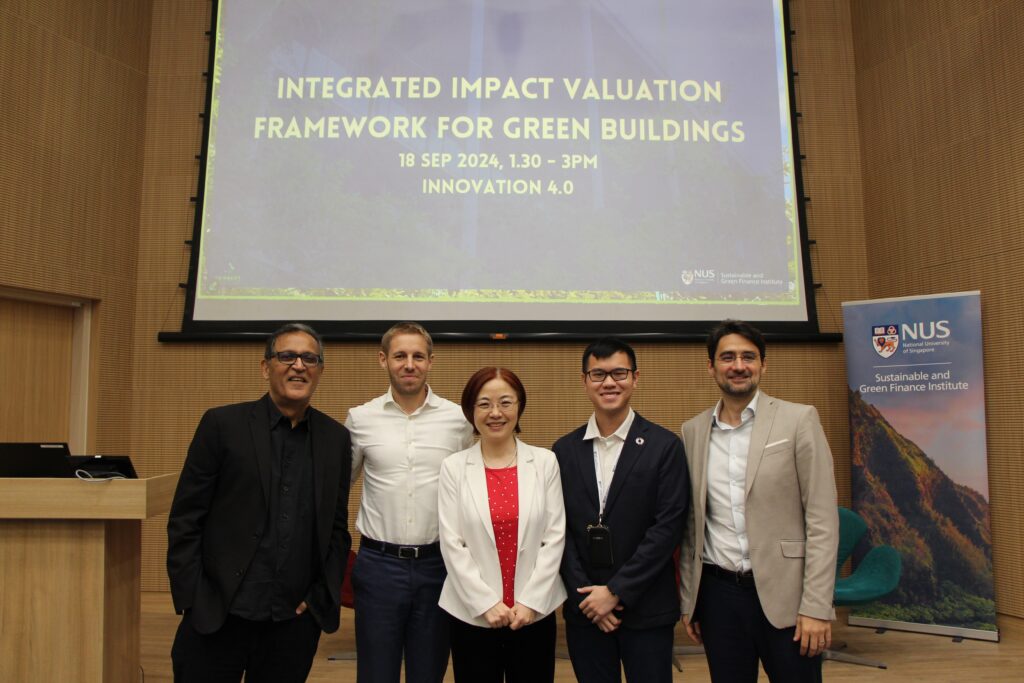
Launch of Integrated Impact Valuation Framework for Green Buildings
18 Sep 2024
On 18 Sep 2024, SGFIN launched its new whitepaper, "Integrated Impact Valuation Framework for Green Buildings," the result of more than two years of work, with esteemed panelists and guests from both the industry and academia.
In the first half of the event, Prof Zhang Weina provided an introduction and overview of the paper, highlighting the key features of the framework. She emphasized two main points: first, the framework offers a holistic analytical approach compared to existing frameworks. SGFIN’s new green building framework incorporates 13 existing building standards and frameworks, thoroughly covering the key impact value drivers of a building. Second, she stressed that the new financing valuation methodology, IROI (Integrated Return on Investment), integrates economic, environmental, social, and governance (EESG) aspects, enabling a more systematic assessment of financial value by considering sustainability compared to the conventional ROI approach.
During the panel discussion and Q&A sessions, the value of the new framework was explored in greater depth. For this insightful session, Prof Nirmal Kishnani (NUS Department of Architecture), and Executive Director Benjamin Towell (Sustainability Office, OCBC) joined Prof Weina as panelists, with Prof Cristian Badarinza (NUS Business School) moderating the panel. They discussed the current and future significance of the framework. Among the various questions raised, the panelists unanimously agreed on the importance of policy changes and the growing social recognition of sustainability by the public and consumers. They emphasized that the framework’s holistic approach to valuing and monetizing the integrated impacts of green buildings is most effective when these values are prioritized in decision-making.
